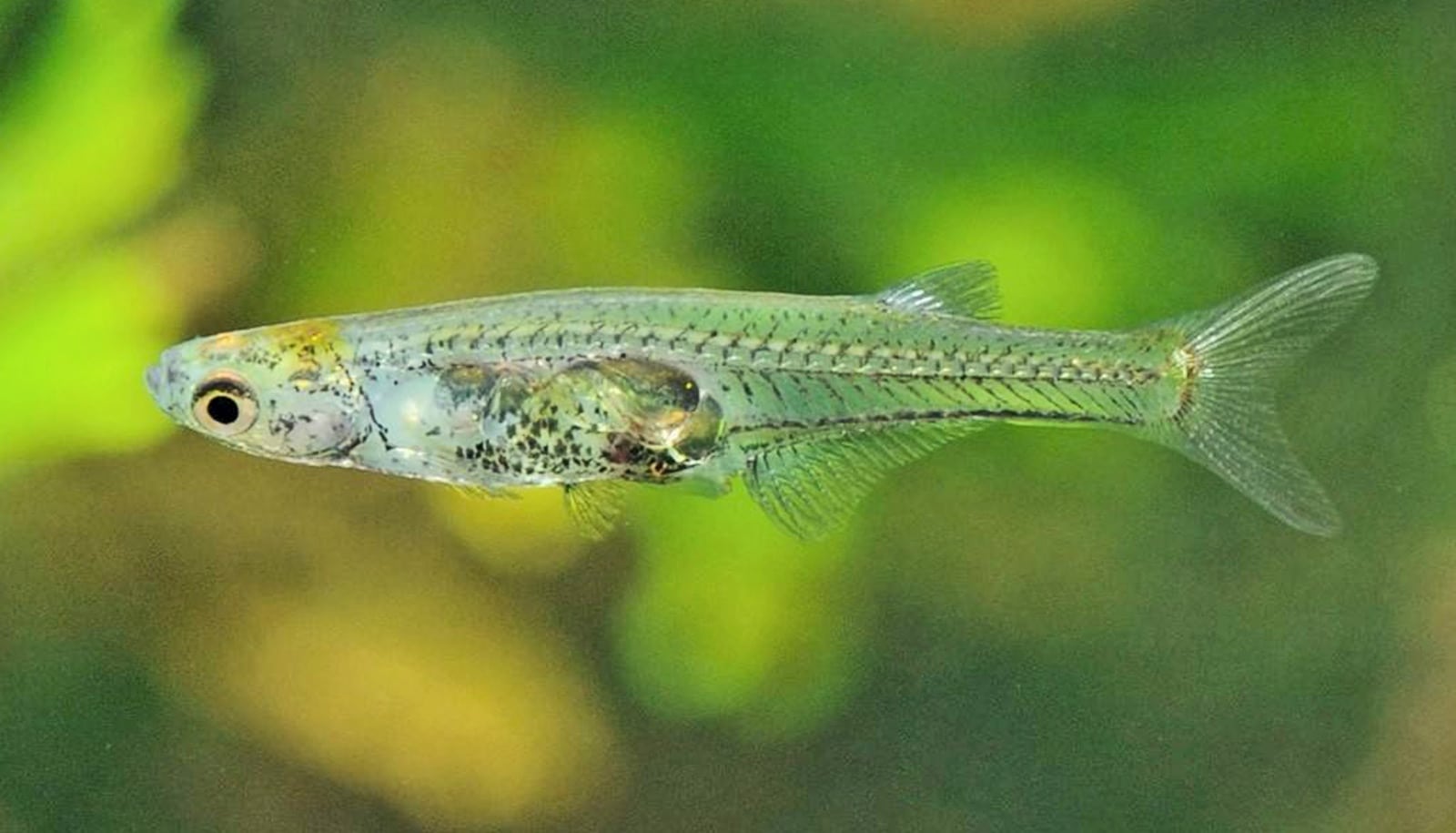A fish that has been swimming in the tanks of neuroscientists for years has just been classified as a brand new species.
Scientists identify and name new fish species around the globe practically every week. Some turn up in unlikely places, and others display unusual characteristics and behaviors. But it’s rare for an unidentified and unnamed fish to have played an important role in scientific research for several years before being officially identified and named.
Danionella cerebrum, the newly described species, has an open skull roof and small brain that is easily studied in situ at the cellular level under a microscope.
“They are a very important little fish in terms of potential scientific breakthrough,” says Kevin Conway, associate professor in the ecology and conservation biology department and curator of fishes at the Biodiversity Research and Teaching Collections in the College of Agriculture and Life Sciences at Texas A&M University.
“It was a surprise find, but one that is important for science and to give this tiny fish the credit it deserves.”

Distant relatives
Danionella fish are just a little longer than a fingernail and come from Myanmar and northeastern India. Researchers assumed for years they were looking at Danionella translucida, named for its translucent body, which was identified in the 1980s.
Conway says both fish look very similar, but Ralf Britz, head of ichthyology at the Senckenberg Natural History Collections in Dresden, Germany, noticed a few characteristics that were distinct from other Danionella on record. As a result, the fish that researchers believed to be Danionella transludica have now been named Danionella cerebrum, as a nod to their exposed brains and importance to neuroscience.
Danionella cerebrum is the fifth fish species in the genus to be discovered so far.
Despite the physical similarities that delayed the discovery, Danionella cerebrum and Danionella translucida are only distant relatives within the genus—more distant than the team of international researchers expected.
By studying DNA sequences, the team was able to show that the two almost identical looking species have been separate for around 15 million years and exhibit large genetic differences, Conway says.
“They are almost identical, even under the microscope. But there are lots of internal details that reveal they are indeed different species, which is corroborated by differences in DNA sequences.”
Drumming communication
The introduction of a new name is important because it differentiates the species of Danionella for the purpose of scientific record keeping, in the past and in the future.
The importance of studying Danionella cerebrum to humans could be significant, Conway says. Scientists have learned much more about human development and physiology and how the body’s intricacies function by studying model species like mice and the zebra fish.
Danionella cerebrum will likely play a similar role, Conway says. Previous research has revealed complex behaviors involving the production of sound, which is extremely useful to neuroscientists interested in learning more about brain activity and function.
Beyond visual communication, Danionella cerebrum males communicate by making a drumming sound, Conway says. Scientists’ ability to view the brain and pinpoint activity related to communication and behavior will guide their understanding of brain circuitry and how these functions relate to the fish’s activity.
It is too early to know what breakthroughs neuroscientists will make by studying the fish, but Conway cites incredible potential for understanding how the brain works in Danionella and in other adult vertebrates, including humans.
“They started as a model for neuroscientists because they have very simple bodies, display very complex behaviors, and give researchers the ability to view the brain in situ and make links between brain activity and behavior, which is not easy to do,” he says.
“Human applications are not there yet, but you can imagine the important role these little fish could play in our understanding of how the adult vertebrate brain works.”
New fish species are important
Danionella cerebrum now can take its place among the almost 36,000 freshwater and marine fish species identified so far. Danionella cerebrum is the 43rd fish species Conway has played a role in classifying.
This is the second Danionella species he has helped name scientifically. The other, Danionella dracula, classified in 2009 by the same international research team, got its name because the males have large fang-like structures that stick out of the mouth.
As a taxonomist, Conway says these discoveries and classifications are a critical step toward answering questions about each species’ past, present, and future. His interest lies in the fish, what they look like, and how they behave, how widely distributed they are, and whether they need conservation and protection.
Conway says scientists are nowhere near a complete inventory of fish species on Earth.
“We really have no idea about how it goes about life in the wild in southern Myanmar, but we’re excited about this new species of tiny, strange fish, and want people to be excited about them too—their place here on this planet and their potential to teach us more about ourselves,” he says.
The paper appears in Scientific Reports.
Source: Texas A&M University



